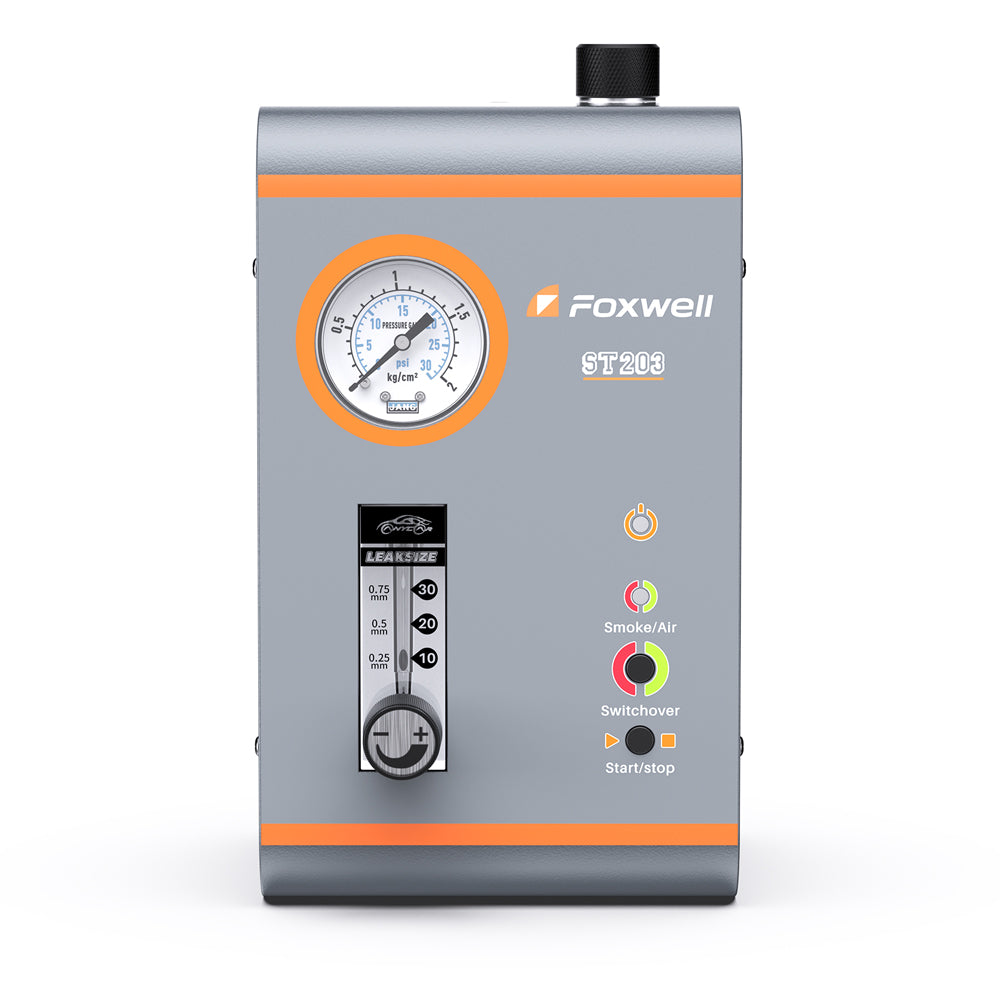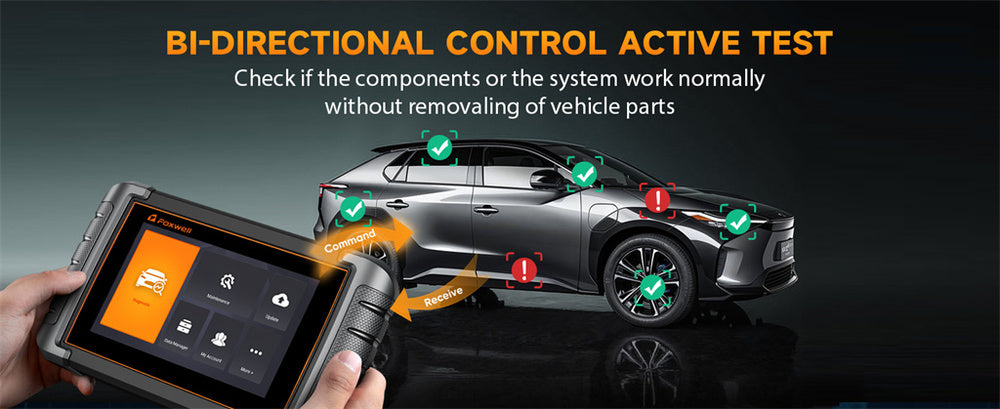Ever had that nerve-wracking moment when your car's check engine light flickers on? It's like your vehicle's way of saying, "Hey, something's up!" But does low oil level cause this? Let's break it down, and see how a car scanner can help.
Can Low Oil Trigger the Check Engine Light?

You might wonder if low oil can be the culprit when that check engine light pops on. While low oil levels don’t usually trigger the check engine light directly, they can lead to conditions that do. When oil levels drop, it can cause low oil pressure, which might prompt the light to turn on.
Low oil pressure means your engine isn’t getting the lubrication it needs, leading to increased friction, overheating, and potential damage. This sets off a chain reaction where sensors detect irregularities, causing the check engine light to activate.
It’s important to note that most modern cars have a separate oil pressure warning light (usually shaped like an oil can) specifically for low oil issues. This is distinct from the check engine light, but dangerously low oil pressure or levels can still trigger the check engine light indirectly. So, while the light isn’t directly linked to oil levels, maintaining proper oil levels can prevent problems that trigger the check engine alert.

Regular oil checks and changes are crucial. They help ensure your engine runs smoothly and can save you from the stress of unexpected dashboard warnings. So, always keep an eye on your oil level to keep your engine happy and your check engine light off.
Why Regular Checks Are Essential
A surprising number of drivers forget to check essential fluids like oil, coolant, and transmission fluid. Some newer vehicles don’t even come with a traditional dipstick, making it harder to manually inspect oil levels. Instead, oil levels must be checked via the dashboard display or through diagnostic tools.
Taking a few minutes every month to check fluids can prevent costly repairs and help your vehicle run smoothly. Do it when the engine is cool, on level ground, and with the ignition off.
Why Does Low Oil Pressure Matter?
Low oil pressure is a big deal because it directly affects your engine's health. When your car doesn’t have enough oil, the engine parts don’t get the lubrication they need. This leads to increased friction, causing parts to wear out faster and the engine to overheat.
Overheating is bad news because it can warp parts of the engine, potentially leading to a complete engine failure. Essentially, low oil pressure can turn minor maintenance issues into major, costly repairs.
Engines are designed to run smoothly with the help of oil, which acts like a cushion between moving parts. Without sufficient oil, these parts grind against each other, generating heat and causing damage.
This is why it’s crucial to keep an eye on your oil levels and maintain them properly. If your check engine light comes on due to low oil pressure, addressing it promptly can save you from bigger headaches down the road.
How Low Oil Levels Damage Engine Performance
Low oil levels don’t just trigger dashboard warnings—they initiate a chain reaction that can gradually (or suddenly) ruin your engine. Here’s how the damage unfolds:
- Loss of lubrication: Oil creates a thin protective film between metal parts like pistons, crankshafts, and camshafts. When levels drop, this film breaks down, allowing metal components to rub directly against each other.
- Increased friction and heat: Without lubrication, internal components such as pistons and cylinder walls grind together. This friction generates extreme heat—far beyond what the engine’s cooling system can handle.
- Wear and warping: The excess heat can warp critical components like cylinder heads or melt small parts such as valve seals. Meanwhile, metal-on-metal contact scratches piston surfaces and wears down bearings, leading to irreversible mechanical damage.
- Declining engine performance: As parts wear and heat builds, the engine struggles to maintain oil pressure and compression. You’ll notice symptoms like rough idling, lagging acceleration, or even stalling—all signs of a system pushed to its limit.
- Catastrophic failure: If ignored, the damage escalates. Worn bearings may seize the crankshaft, or a warped cylinder can lock the piston in place—both scenarios often require full engine replacement, costing thousands of dollars more than routine oil changes.
While these issues (like rough idling or stalling) are caused by low oil, they rarely trigger the check engine light directly. For the specific problems that do turn on that warning light, the following are the common causes.
Common Reasons for Check Engine Light

The check engine light can illuminate for various issues—many unrelated to low oil, but critical to address. Here are the key culprits, tailored to keep your car’s health in focus:
- Loose or Faulty Gas Cap: One of the simplest triggers. A loose, cracked, or ill-fitting cap fails to seal the fuel tank, allowing fuel vapors to escape and disrupting the evaporative emissions system—often an easy fix with a tight twist or replacement.
- Overfilled Gas Tank: Topping off your fuel tank beyond the click can cause excess fuel to saturate the charcoal canister in the EVAP system, leading to a check engine warning.
-
Emissions System Issues:
- Oxygen Sensor Failure: This sensor balances the air-fuel mix by monitoring exhaust gases. A faulty one hurts fuel efficiency (up to 15%) and triggers the light; replacing it restores performance.
- Catalytic Converter Problems: This component cleans exhaust gases. Clogs or damage cause poor acceleration and higher emissions, with repair costs rising if ignored.
- Spark Plug or Ignition Coil Issues: Worn spark plugs or faulty coils cause misfires, rough idling, and reduced power. The engine’s computer detects these irregularities and flips the light.
- Mass Airflow Sensor (MAF) Malfunction: It measures air entering the engine to adjust fuel injection. Dirt or failure throws off the mix, leading to hesitation, stalling, or the check engine light.
- Engine Overheating: Low coolant, a broken thermostat, or a clogged radiator can spike temperatures. Overheating damages parts, and the light serves as an urgent warning to stop driving.
- EVAP System Leaks: Beyond the gas cap, cracks in hoses or valves of the evaporative emissions system let fuel vapors escape, triggering the light to flag pollution risks.
Diagnosing the Issue
Diagnosing why your check engine light is on can be straightforward with the right approach:
Checking Oil Level: The first step is to check your oil level. Low oil might not directly cause the check engine light to come on, but it can lead to conditions that do. Make sure your oil level is where it should be to keep your engine running smoothly.
Using Diagnostic Tools: Investing in a good diagnostic tool, like the Foxwell NT809TS, can save you a lot of time and stress. This tool can quickly identify the reason behind your check engine light, helping you address the issue promptly. It’s user-friendly and provides accurate readings, making it a great tool for any car owner.
Preventive Maintenance Tips
To keep your engine—and that check engine light—in check, consider these tips:
Regular Oil Changes: Stick to your vehicle's recommended schedule. This ensures that your engine always has clean, sufficient oil, preventing low oil pressure and other related issues.
Check Fluid Levels: Regularly check not only your oil but also other essential fluids like coolant, brake fluid, and transmission fluid. Each of these fluids plays a vital role in your vehicle’s operation, and keeping them at the right levels helps prevent potential problems.
Inspect Belts and Hoses: Belts and hoses can wear out over time, leading to leaks or breaks that can cause significant damage. Regular inspections can help you spot wear and tear early and replace these components before they fail.
Routine Tune-Ups: Scheduled tune-ups allow mechanics to catch potential issues before they become serious. This includes checking spark plugs, filters, and other components that can affect your engine’s performance.
Use Quality Parts and Fluids: When replacing parts or topping up fluids, always use high-quality products that meet your car manufacturer's specifications. This helps ensure the longevity and efficiency of your vehicle.
Can your check engine light come on if it's cold?
Yes, cold weather can trigger the check engine light. Low temperatures can affect your vehicle’s battery voltage, oxygen sensors, or fuel system, especially if moisture freezes. These conditions can cause temporary performance issues that set off engine codes. If the light stays on after the engine warms up, it’s likely due to a persistent issue, not just cold weather.
Finding Reliable Oil Change Services
Finding a trustworthy place for oil changes is vital for keeping your car in top shape. You want a service that’s quick, reliable, and doesn’t break the bank. Places like Strickland Brothers 10 Minute Oil Change are great because they specialize in fast, efficient service. You can get in and out without spending your whole day waiting. Plus, they have trained professionals who know exactly what your car needs.
Reliable services not only change your oil but also check other vital fluids and perform basic inspections. This comprehensive approach ensures that small issues are caught early, preventing more serious problems. Regular visits to a reputable oil change service keep your engine running smoothly and your mind at ease, knowing your car is well taken care of.

Conclusion
Regular maintenance, including timely oil changes, is key to keeping your car in top shape and avoiding those unexpected alerts. So next time your check engine light comes on, don’t panic—just check your oil and keep up with regular car care!
FAQs
Can driving with low oil damage the engine?
Yes, driving with low oil can cause severe engine damage due to increased friction and overheating.
How often should I check my oil levels?
It's recommended to check your oil levels at least once a month and before long trips.
What should I do if my check engine light comes on due to low oil?
Stop driving immediately, check and refill your oil, and consult a mechanic if the light persists.
What's the difference between the oil light and check engine light?
The oil light warns of low oil pressure or pump issues. The check engine light flags engine, ignition, or emissions-related problems, which may include oil-related effects.
Can I drive with the check engine light on?
Yes, you can drive with the check engine light on, but with caution. If the light is solid (not flashing) and your car runs normally, it often means a minor issue such as a loose gas cap or a faulty sensor. However, if the light is flashing, it typically signals a serious engine misfire that can damage the catalytic converter. In that case, pull over and stop driving immediately. Always have the car scanned with an OBD2 scanner as soon as possible to identify the exact problem.
Can an oil filter cause a check engine light?
Rarely, but yes—it’s possible. If an improper or clogged oil filter causes oil flow issues or results in low oil pressure, it can indirectly trigger the check engine light. Also, if an oil filter is not installed properly and causes a leak or pressure drop, the engine’s sensors might detect it as a fault. Some modern vehicles have sensors that detect oil flow issues related to the filter, directly triggering the check engine light.
How long after adding oil will the check engine light go off?
If the check engine light was triggered directly by low oil levels, it may turn off within a few minutes to a few driving cycles after adding oil and restarting the car. However, if the light was caused by other issues (e.g., a faulty sensor, emissions problems) unrelated to oil, adding oil won’t make it go off. In such cases, you may need a diagnostic tool to reset the light after fixing the root cause.








Leave a comment
This site is protected by hCaptcha and the hCaptcha Privacy Policy and Terms of Service apply.